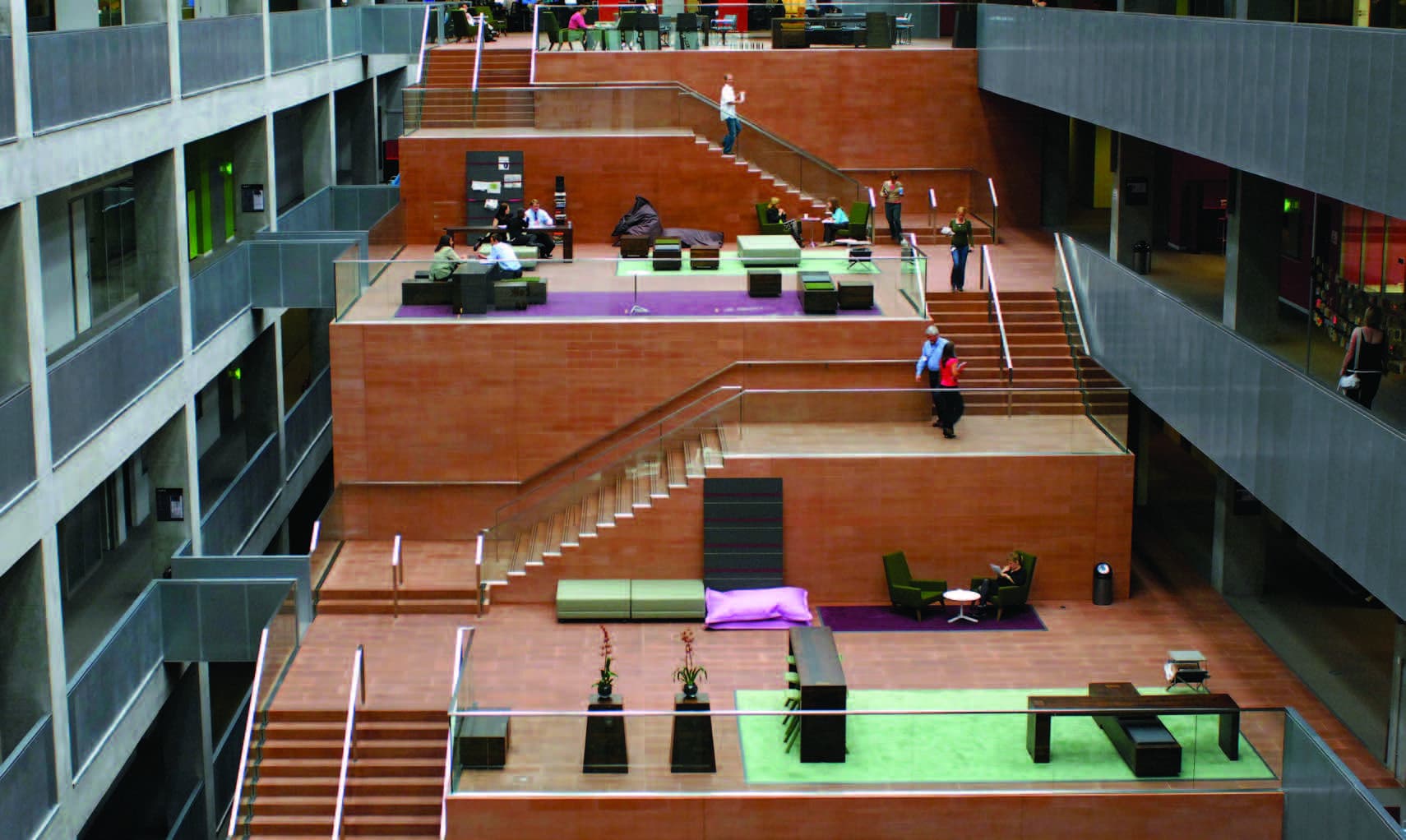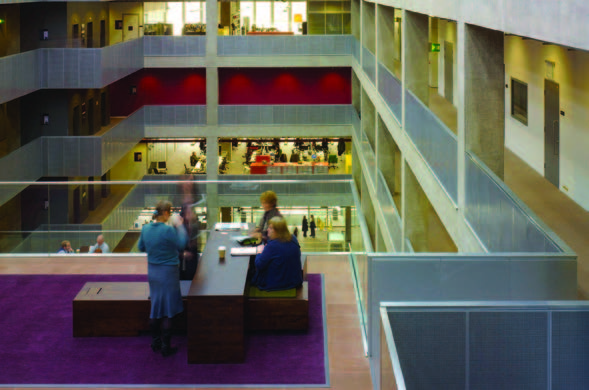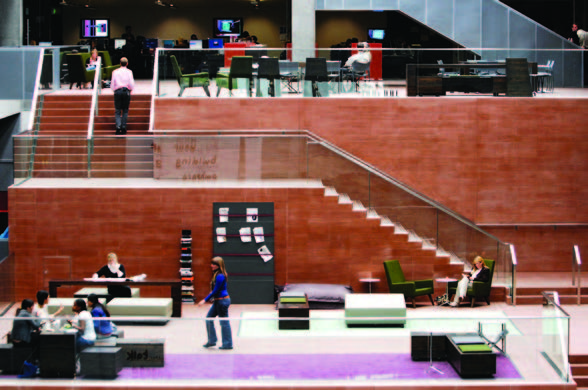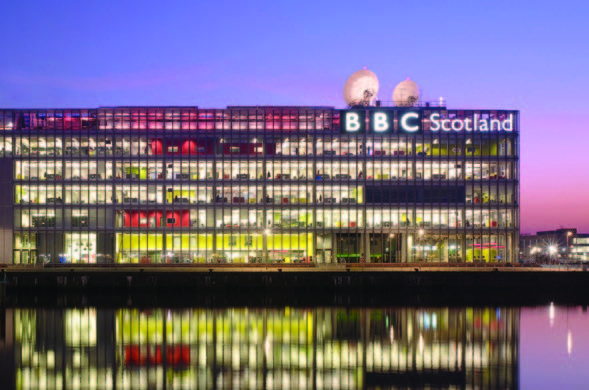The purpose-built BBC Scotland headquarters at Pacific Quay in Glasgow was constructed in 2008 to replace smaller premises on Queen Margaret Drive.
The complex accommodates approximately 1,200 staff and visitors. It was designed to house offices, meeting spaces, television and radio studios, storage, archiving and areas for public exhibitions and outreach.
This vibrant complex, designed by David Chipperfield Architects, marks the beginning of a new era for the BBC and broadcasting in Scotland. The 34,000m2 digital centre sets a new standard in terms of state-of-the-art technology, production methods and public access. It plays a central role in the regeneration of the wider urban area.
The building is the only site to join up all of BBC’s media: TV, radio and online. It links the national hub with all other BBC centres around Scotland. The new centre also features the UK’s most advanced broadcasting studios and production facilities. The main studio, ‘studio A’, is the biggest TV recording space and the second-largest TV studio in Britain, enclosing 790m2.
Stone features
BBC Scotland’s headquarters was designed to be a major part of the new innovation quarter in the science park in the Pacific Quay area of the city. The remarkable glass façade ensures that the perspective of the building will change throughout the day, across the seasons, and from different viewpoints.
The building’s interior is a striking example of a natural stone-clad heart. A defining feature is the internal, stepped red sandstone ‘street’ that rises throughout the entire length of the building. It provides break-out spaces and informal meeting areas. It also offers visitors a dramatic view of BBC Scotland at work.
The architects selected red sandstone as the principal material for the most dramatic feature in the building: the central staircase or ‘street’. It sits alongside steel, glass and concrete finishes giving a reflective nod to Glasgow tenements and the shipbuilding heritage of the Prince’s Dock site on which the building stands.
Special techniques
The design of the building reflects Glasgow’s industrial heritage. This theme is reflected in the materials used in its construction and its application throughout the building. Solid blocks of sandstone sit alongside bare concrete and exposed pipes, both a deliberate and contrasting part of the design.
Technology is incorporated everywhere in the building. On the glazed south façade, the blinds adjust themselves automatically depending on the daylight levels and the sun’s position.
The stone used for the floor is different from that used for the wall. The architects incorporated the more interestingly patterned Lazonby sandstone for the walls and the harder, more robust Locharbriggs sandstone for the walls and steps.
Both are red in colour and reflect the type of stone used traditionally in buildings in the Glasgow area. Locharbriggs sandstone is a Scottish stone and Lazonby was imported from Cumbria.
A library of sustainable building materials
Our website includes a web-based resource that showcases sustainable, traditional, innovative, recycled and low carbon building materials. If you are looking for inspiration or information on different types of materials to consider for your project, visit our materials library.





